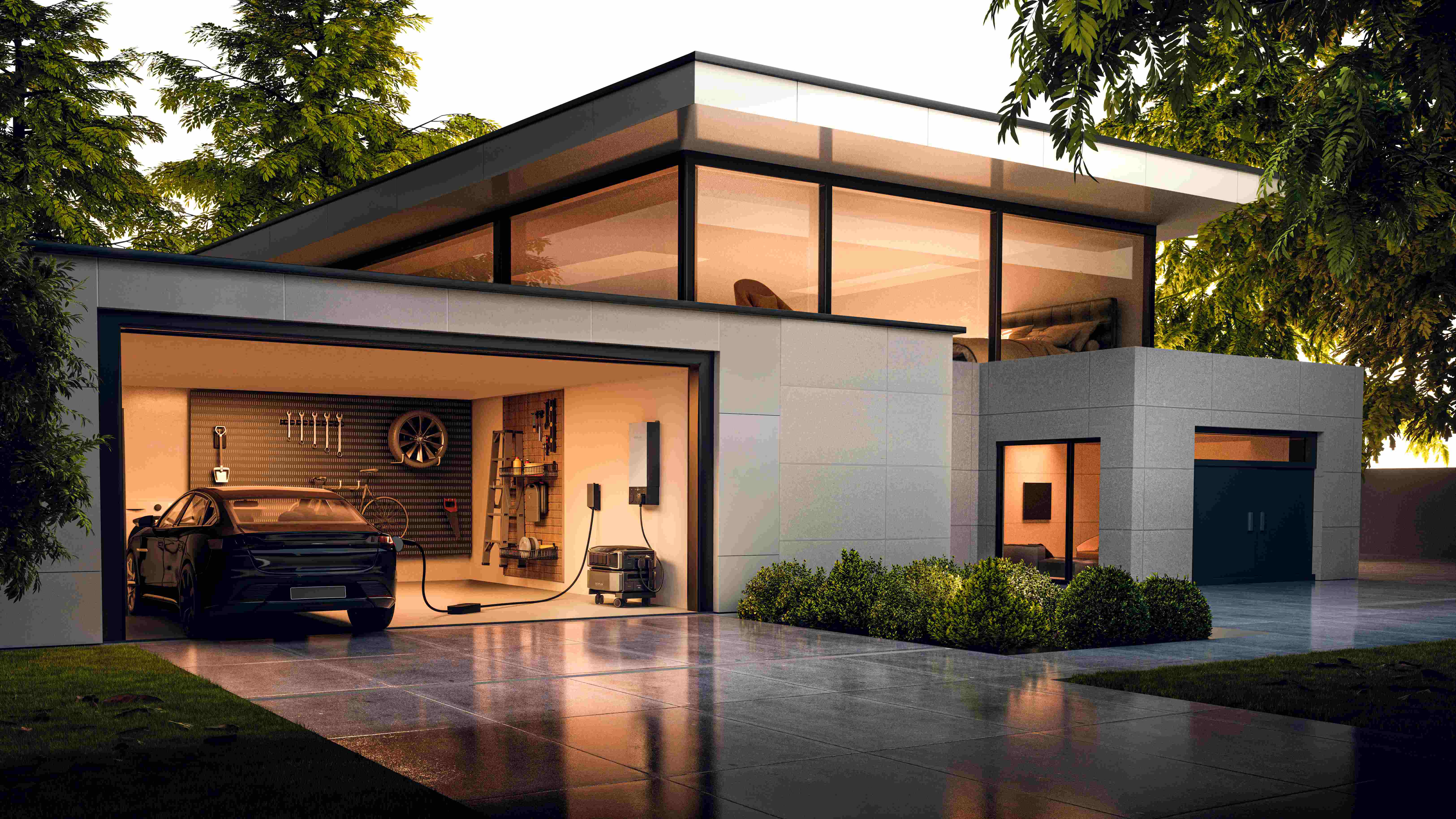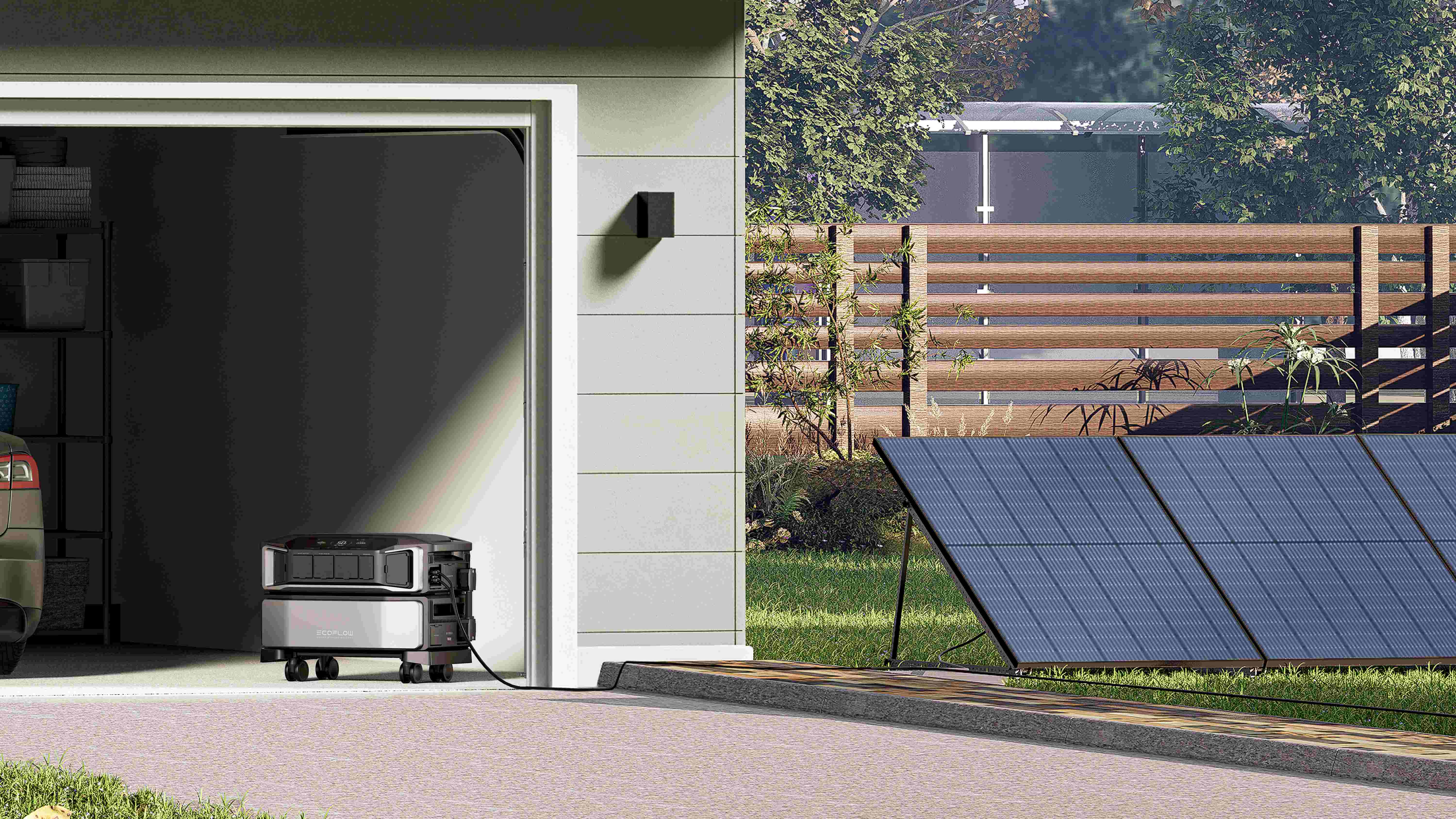Why a Modular Battery Beats a 12,000 Watt Generator
When you're researching backup power for your home, a 12,000-watt generator seems like the obvious choice. It's powerful enough to run your entire house during an outage, and generators have been the standard solution for decades.
But generator ownership comes with challenges many people don't expect: constant noise, regular maintenance needs, ongoing fuel costs, and installation delays that can stretch for months during busy seasons.
A newer solution exists now. Modular battery systems deliver the same 12kW of whole-home power without those problems.
What Can a 12000 Watt Generator Run?
To put 12kW in practical terms, this power level runs these things at the same time:
A 5-ton central air conditioning system (typical for 2,000 sq ft homes)
An 80-gallon electric water heater
Refrigerator and freezer
Home internet and electronics
Major kitchen appliances including cooktops and microwaves
This represents true whole-home backup, not just emergency lighting and a few basic circuits.
The important specification is startup capacity, not just running wattage. Central air conditioners need much higher power during compressor startup—often 2-3 times their normal operating load. Quality 12kW systems include adaptive startup technology that handles these surge demands while protecting equipment life.
The Generator Reality Check
Traditional generators have served homeowners well for years, but several limitations have become more clear over time.
Noise pollution affects both your household and neighbors. Even modern 12,000 watt inverter generators produce high sound levels during operation. This becomes especially difficult during long outages that need 24/7 runtime.
Fuel dependency creates ongoing costs and hassles. Each outage needs fuel buying, storage, and handling. For multi-day events, this means multiple refueling trips and rising expense.
Maintenance isn't optional. Generators need scheduled service—oil changes, filter replacements, spark plug work, and regular engine servicing. Skipping maintenance hurts reliability when you need it most.
Installation timelines take a long time. Standard installations typically need 4-8 weeks under normal conditions. During high demand after natural disasters, wait times can stretch to 6-8 months as installers get fully booked.
You can't upgrade them. When household power needs go up—whether from electric vehicle charging, home additions, or new high-power appliances—generators cannot be upgraded. The only option is complete replacement.


How Modular Battery Systems Differ
Battery modular technology works in a completely different way. Instead of creating power through burning fuel, these systems store grid electricity (or solar power), then deliver it when needed with zero emissions and zero noise.
True Modularity
The design allows real growth over time. Start with a base setup providing 12kW output and 12kWh storage. You can expand your power storage by adding easily connected battery modules to increase your runtime. Increasing power output means adding inverter units that work together. Nothing gets replaced or thrown away as needs change.
Faster Installation
While generator installations take weeks or months, battery system setup typically finishes within one week. Battery units and inverters are plug-and-play—only the distribution panel needs professional electrical work. This shorter timeline means protection arrives quickly instead of leaving you waiting and vulnerable.
Total Cost of Ownership Advantage
Compare 10-year ownership costs:
| Cost Category | Generator System | Battery System |
| Equipment & Installation | Generator unit + transfer switch + installation work | Inverter + batteries + panel installation |
| Fuel Costs | Ongoing expense per outage | Zero—uses stored electricity |
| Maintenance | Annual servicing needed | Zero scheduled maintenance |
| Upgrading | Need complete replacement | Add components as needed |
| Moving | Permanent installation | Can relocate system |
| Noise | High during operation | Silent operation |
The battery system removes all recurring fuel and maintenance costs, delivering much lower total ownership cost despite similar starting investment.
Smart Operation
Modern battery systems do more than just basic backup. They work with solar panels, time-of-use rate schedules, and grid connection to provide daily money savings beyond emergency readiness.
During normal operation, systems charge during off-peak low-rate times and use power during peak high-rate times, lowering electricity costs every day. Solar connection increases savings while moving toward energy independence.
Advanced monitoring shows circuit-level details about household power use. Smart load management during outages focuses on critical circuits automatically, stretching available runtime by 40% or more compared to running everything at once.


Real-World Performance Scenarios
Practical performance matters more than specification sheets.
Long winter outage: When a multi-day storm knocks out power in freezing conditions, your heat pump becomes necessary for both comfort and stopping pipe damage. With expandable battery capacity, runtime stretches from hours to days. Solar input continues even in winter conditions, while optional generator connection provides unlimited duration through short charging sessions instead of continuous running.
Summer cooling priority: During hot-weather outages, air conditioning becomes the main need. A 12kW system handles 5-ton AC units plus other loads. Remote monitoring shows remaining runtime, and circuit-level control lets you turn off non-essential loads to maximize cooling time.
Hurricane preparation: Weather connection enables automatic charging to 100% capacity before the storm. When power fails, switchover happens in under 20 milliseconds—fast enough that internet equipment doesn't disconnect. Solar generation continues during weather breaks, keeping charge levels up throughout long grid outages.
The EcoFlow Delta Pro Ultra XSolution
EcoFlow's Delta Pro Ultra X system brings all these capabilities together in one platform designed specifically for whole-home 12kW backup.
The system delivers true 12,000-watt split-phase 120V/240V output with 178A locked rotor amperage—enough to start and operate 5-ton air conditioning systems without extra soft-start equipment. Base setup includes two 6kWh battery packs (12kWh total) with expansion ability to 180kWh for long backup time.
Installation finishes in about one week. Smart Home Panel 3 installation needs professional electrical work, while inverter and battery parts are user-installable plug-and-play units. EcoFlow has a nationwide professional installer network with clear flat-rate pricing.
Smart Home Panel 3 provides the system intelligence. Available in 24-circuit and 32-circuit options with 200A capacity, it replaces regular main panels while adding circuit-level monitoring, remote control, and priority-based load management. During outages, users can see remaining runtime by priority level and remotely control individual circuits to optimize backup time—stretching critical circuit runtime by over 40%.
Solar connection is built in. The system accepts up to 10kW solar input and charges two battery packs to 80% in about 70 minutes. When paired with a 10kW solar array, the system pays for itself in roughly 3 years while delivering real energy independence.
For maximum backup security, Delta Pro Ultra X works with regular generators through EcoFlow's Generator Rectifier accessory. This enables connection with any third-party generator up to 12kW, providing silent battery operation for normal use with unlimited runtime ability when situations require it.
The Modern Choice for Whole-Home Power
The basic question isn't whether whole-home backup power makes sense—extreme weather patterns have answered that. The real question is whether traditional generator technology remains the best choice when modern options install faster, operate more cost-effectively, need no maintenance, provide daily money savings, and perform better during actual emergencies.
Modular battery systems haven't simply matched generator abilities—they've changed what people should expect from home backup power. EcoFlow's Delta Pro Ultra X represents this change: reliable whole-home power without the noise, maintenance work, and operating limitations of traditional generators.
Frequently Asked Questions About Home Battery System
Q1. Can a battery system reliably start central air conditioning systems?
Yes, absolutely. Think of starting your AC like pushing a heavy cart—it requires a big initial shove to get it moving. A traditional power source might give it a sudden, hard jolt, which is stressful for the AC's motor.
A modern battery system like the DELTA Pro Ultra X is much smarter. It delivers a powerful but smooth and controlled surge of energy to start your AC, even large 5-ton units. This gentler approach is actually better for your equipment and can help extend the life of your air conditioner.
Q2. How do you keep power during long outages when batteries run low?
You have several ways to "refuel" your system, ensuring you have continuous power without having to run a noisy generator 24/7.
Solar Charging: Solar panels can constantly recharge your batteries during the day. Even on cloudy days or in the winter, they provide a meaningful charge that extends your runtime.
Generator as a Fast Charger: You can connect a gas generator for just 1-3 hours to quickly recharge the batteries, then turn it off. This allows you to enjoy many more hours of silent, battery-powered electricity.
Grid Recharging: If the grid power comes back on, even for a short time, the system will automatically prioritize recharging itself to full capacity.
The best strategy is to combine these methods for an endless loop of power, using a generator only as a quick backup charger when needed.
Q3. How do installation costs compare between battery systems and standby generators?
Let's break it down into two parts: upfront costs and long-term costs.
Upfront Installation Costs: Standby generators often require complex and expensive installation, including running gas lines, pouring a concrete slab, and extensive electrical work. In contrast, battery systems are much simpler. The main professional task is connecting a panel to your home's breaker box, and the batteries and inverters themselves are plug-and-play.
Long-Term Costs: This is where the difference is huge. Generators require ongoing expenses for fuel and regular maintenance like oil changes. Over a decade, these costs add up to thousands of dollars. Battery systems have zero fuel costs and require virtually no maintenance, making the total cost of ownership much lower over time.
Q4. Can capacity be expanded after the first installation?
Yes, this is a key feature of a modular design. Your system can grow with your needs, much like building with LEGOs.
Want more backup time? Simply add more battery packs. They are designed to be plug-and-play, easily connecting to your existing system.
Need more power to run more things at once? You can add more inverter units to work together, doubling or tripling your power output.
This means your initial investment is future-proof. If you later buy an electric vehicle or build an addition to your home, your power system can easily scale up to meet your new demands.